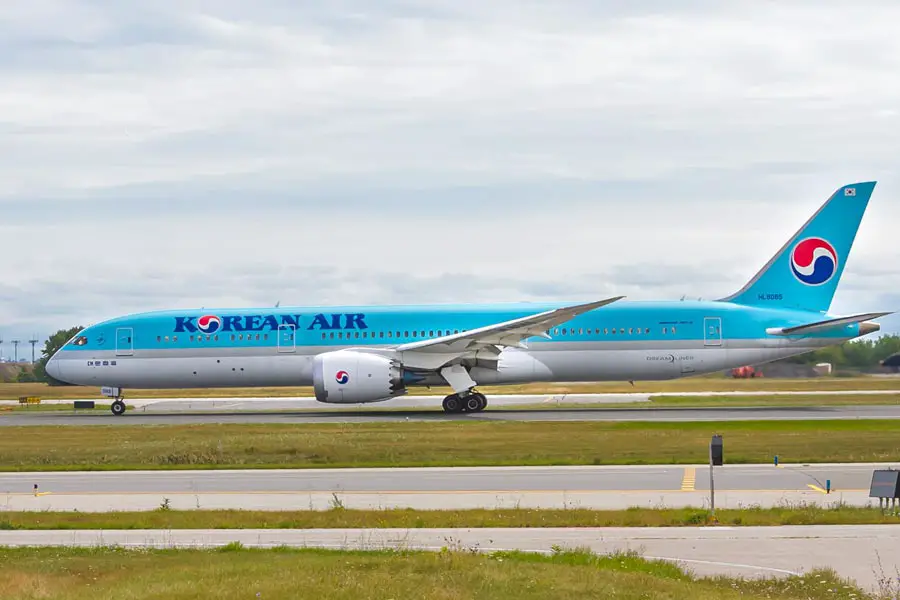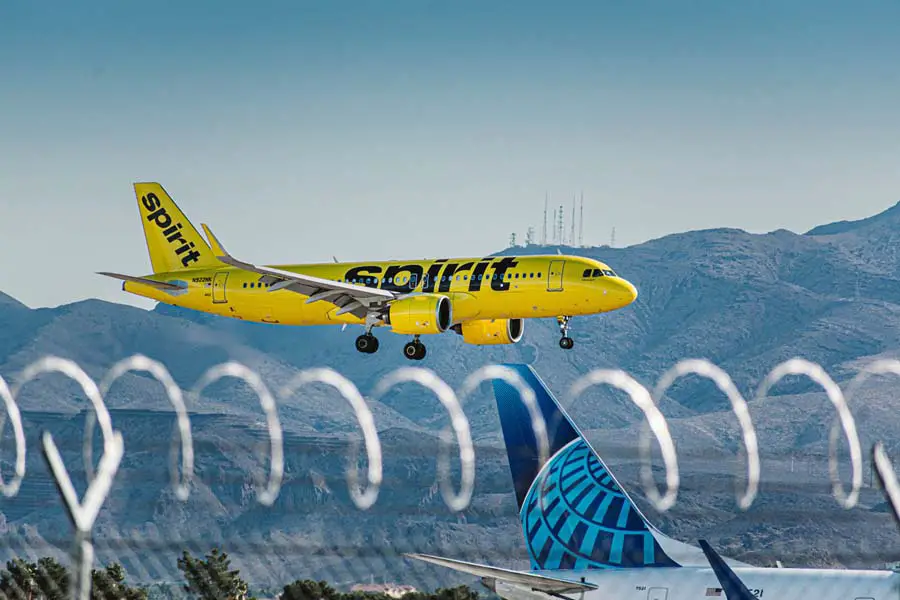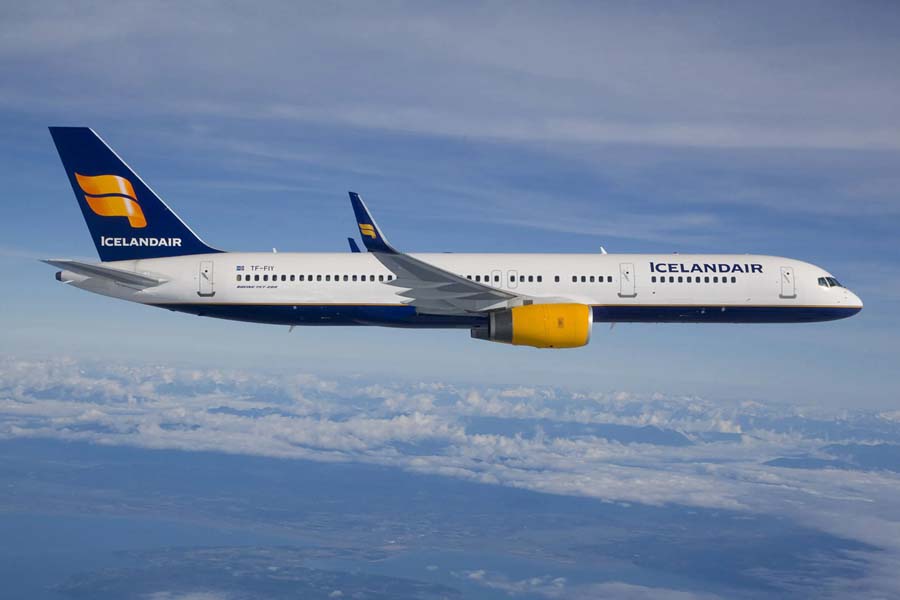Viva Aerobus is a Mexican airline that flies to a number of destinations within Mexico as well as some international destinations such as the United States and Colombia.
This article will tell you all you need to know about how much baggage you can take on your Viva Aerobus flight.
Viva Aerobus has a variety of fare types to choose from, and your carry-on and check-in baggage allowance will depend on your selected fare type. All fare types include one personal item such as a laptop bag or handbag free of charge.
You have a number of different opportunities to purchase increased carry-on or check-in baggage allowances once you have purchased your ticket.
Read on to understand Viva Aerobus’ fare types, baggage allowances, and your options to purchase additional allowances.
Viva Aerobus Fare Types
To understand Viva Aerobus’ baggage rules, you need to have an appreciation of the various fare types on offer. There are four fare types to choose from, each with different benefits included, as follows:
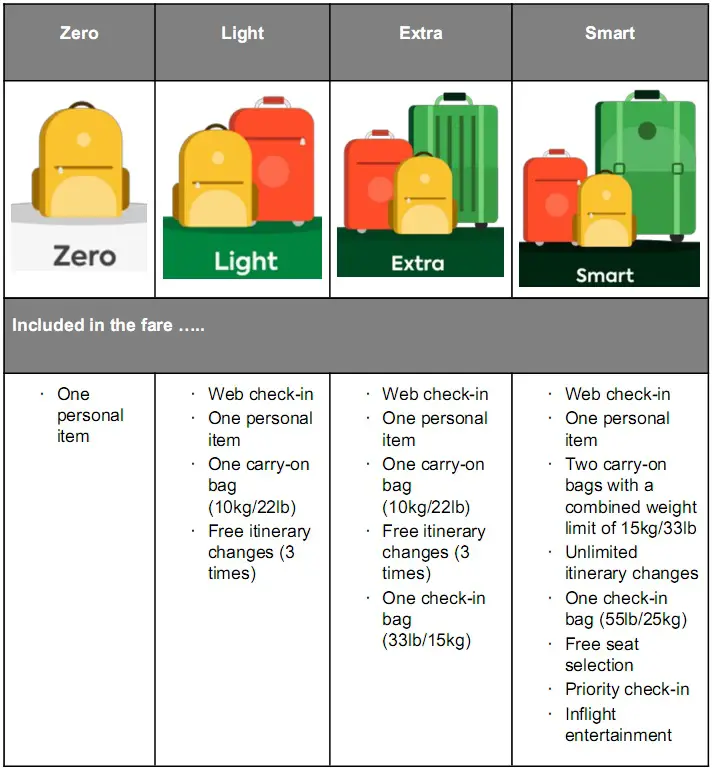
I used the Viva Aerobus flight booking engine to check the fare differences between each fare type for one example international flight and one example domestic flight, three months ahead. This is what I found:
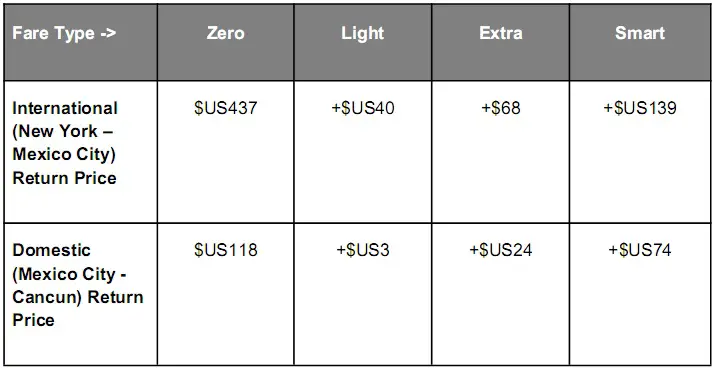
The additional prices shown are the additions payable on the ‘Zero’ fare, so for example, the ‘Extra’ fare for New York – Mexico City return would be $US437 + $US68 = $US505.
Viva Aerobus Cabin Baggage
Cabin Baggage Size and Weight Limits
When flying with Viva Aerobus, you can take a personal item on board such as a laptop bag, handbag, shopping bag, or backpack with all fare types, including ‘Zero’.
The maximum permitted dimensions for this personal item are 18 x 14 x 8in (45 x 35 x 20cm, length x height x width). Your personal item must fit under the seat in front of you during the flight. If you want to take a carry-on bag on board the aircraft you will need to purchase a ‘Light’, ‘Extra’, or ‘Smart’ fare. Carry-on bags, cannot exceed the maximum dimensions of 16 x 10 x 22in (40 x 25 x 55cm, length x height x width), including handles and wheels.
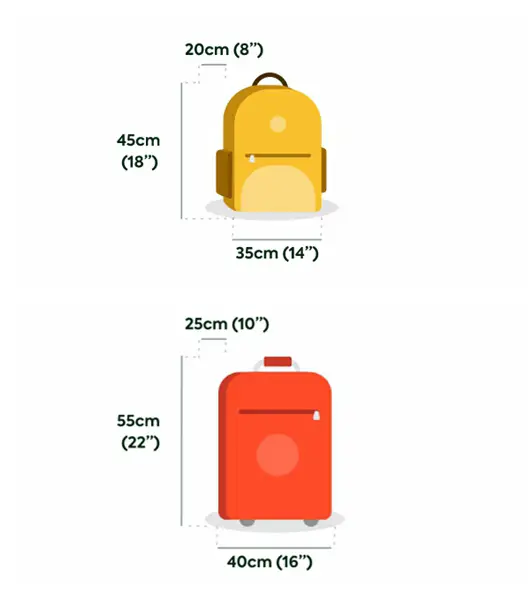
When traveling on a ‘Light’ or ‘Extra’, the maximum carry-on bag weight allowed is 22lb (10kg). However, you have the option to pay and increase the weight limit to 33lb (15kg). If you are traveling on a ‘Smart’ fare the permitted carry-on weight limit is 33lb (15kg), and this weight can be spread across two carry-on bags.
If your carry-on bag exceeds the specified weight or size limits, Viva Aerobus staff will check it in for a fee.
Occasionally, if the flight is very busy, Viva Aerobus staff may ask you to check in your carry-on bag free of charge.
Cabin Baggage Fees
The fees that you will pay to take on board any cabin baggage that is not already included as part of your fare will vary according to whether you are traveling on a domestic route within Mexico, or on an international route. These fees also vary depending on where you buy the additional allowance, as follows:
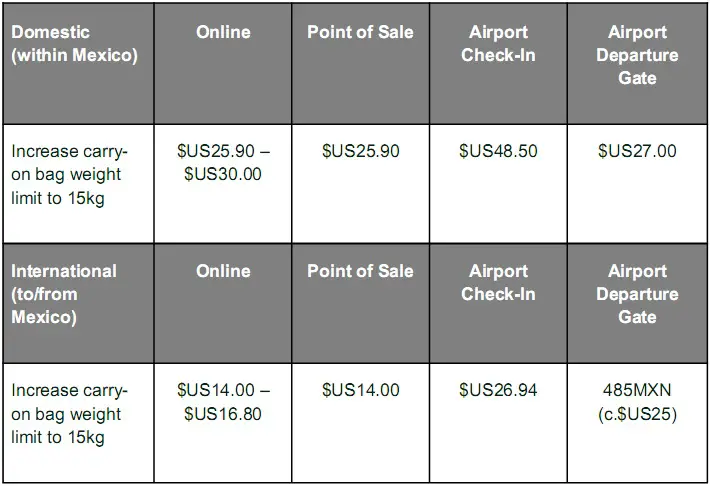
Stated fees are one-way and apply to each flight segment.
Viva Aerobus Check-In Luggage
Check-In Luggage Size and Weight Limits
If you are traveling on an ‘Extra’ or ‘Smart’ fare, your first check-in bag is included at no additional cost. For the ‘Extra’ fare, the maximum check-in bag weight is 33lb (15kg), and for ‘Smart’ fares it is 55lb (25kg).
Your check-in baggage cannot exceed 62 linear inches (length + width + height), including handles and wheels.
Regardless of your selected fare type, you can add baggage to your reservation for a fee, which will depend on the weight of your baggage. The maximum allowed weight for each item of check-in baggage is 71lb (32kg).
Check-In Luggage Fees
The fees that you will pay to take check-in baggage that is not already included as part of your fare will vary according to whether you are traveling on a domestic route within Mexico, or on an international route. These fees also vary depending on where you buy the additional allowance. Online and Point of Sale changes to baggage allowances can be made up to two hours before your flight departure and your last opportunity to purchase an additional check-in bag allowance is at the airport check-in desk. The fees for additional international check-in baggage allowances are cheaper than the fees for additional domestic check-in baggage allowances.
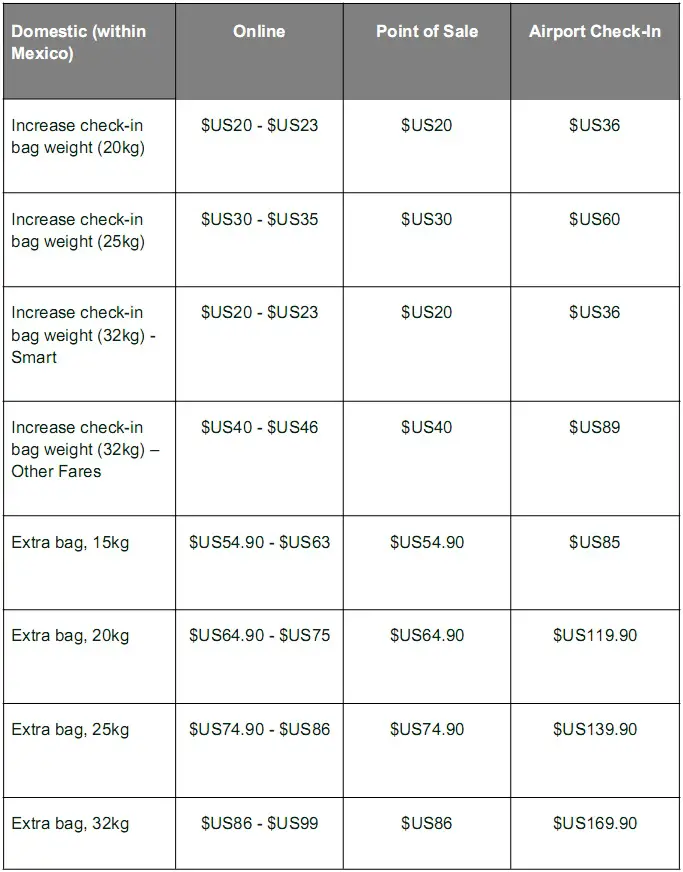
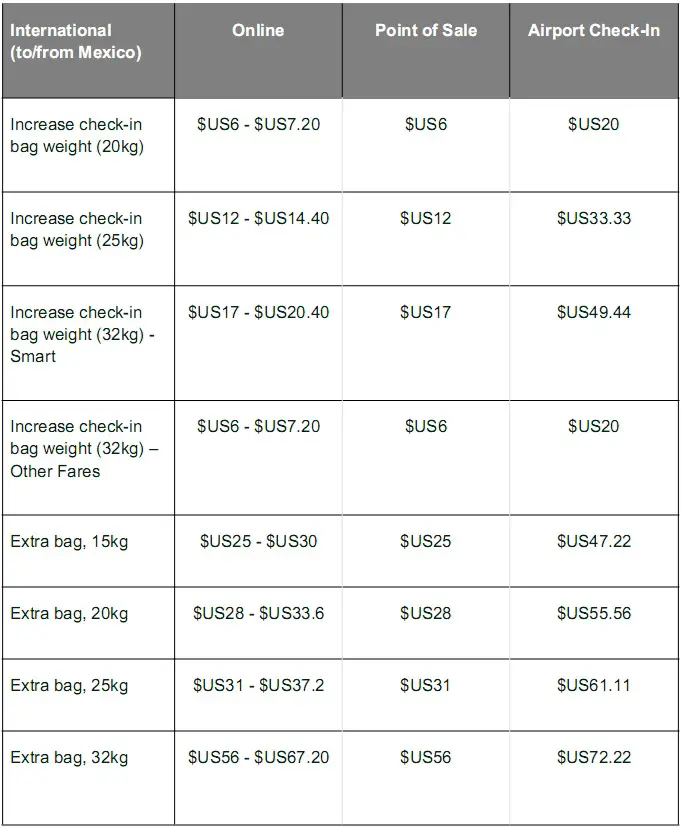
Stated fees are one-way and apply to each flight segment.
One very interesting thing to note is that if you buy an additional baggage allowance after your buy your ticket, the international prices are less than the domestic prices. However, the incremental increases in fares between Zero and the other fare types appear to be lower for domestic routes compared to international routes. This makes it quite complicated to work out how to get the best deal. So, I checked the prices for the same journeys that I checked previously for the following scenario:
- Single traveler
- 1 carry-on bag (10kg)
- 1 check-in bag (15kg)
For this scenario, I could buy the Extra fare where the carry-on and the check-in bag are included, or I could buy the Zero fare and then buy the required additional baggage allowances later online, noting that for the carry-on bag you can only buy a 15kg allowance after you have booked your ticket. This is what I found:
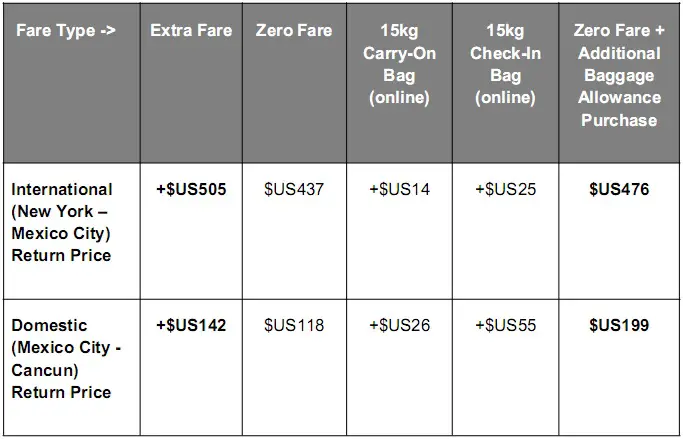
So, it seems that for the routes and dates I investigated it would make sense to buy an ‘Extra’ fare on the domestic route, and a ‘Zero’ fare on the international route and then buy the additional baggage allowances online later (assuming I’m happy with the restrictive ‘Zero’ fare conditions – no itinerary changes, and no web check-in).
Excess (Oversize) Check-In Baggage
Oversized check-in bags that exceed the maximum permitted total linear dimensions of 62in (length + width + height) are charged at a rate of $US48.50 on both domestic and international routes.
Sports Equipment and Musical Instruments
You can check in sports equipment and musical instruments in lieu of your check-in baggage allowance as long as these items are within the permitted/purchased size and weight limits.
Otherwise, you can book and purchase allowances as follows:
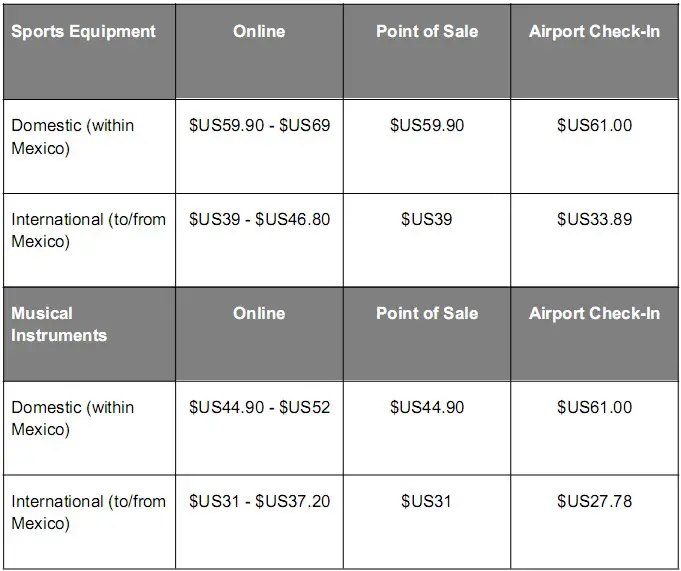
Traveling With Infants
Infants under 2 years of age can travel on the lap of an adult passenger, or can travel in their own booked seat. In both cases, you can check in a baby seat or stroller free of charge. If the infant is traveling in its own seat the infant will have a baggage allowance commensurate with the chosen fare type. If the infant is traveling on the lap of an adult it is not entitled to any carry-on or check-in baggage allowance.
Viva Aerobus also offers a ‘Baby Package’, which costs between $US44 and $US51 for domestic flights, and between $US40 and $US63 for international flights, depending on how you purchase it. This package allows you to carry a backpack or diaper bag up to the same weight and size specifications as a carry-on bag. With this package you can also use the ‘Viva Express’ line at check in and you can take your baby stroller to the aircraft door where Viva Aerobus staff will check it in.
Conclusion
With Viva Aerobus, there are numerous choices to make when it comes to baggage. The first is to decide if you want to buy a ‘Zero’ fare with no carry-on and check-in baggage allowances (only one personal item is allowed with this fare), or buy a fare with either only a carry-on allowance or with a carry-on and a check-in baggage allowance.
Viva Aerobus’ pricing structure is quite complex. As you would expect, the differentials between the international fare types appear to be larger than those for domestic routes. However, if you decide to buy baggage allowances after you have made your booking, the additional baggage allowance prices for domestic routes are higher than those for international routes. For the routes and flight dates, I tested this seems to suggest that for domestic routes it makes sense to buy a fare type with baggage included. Whereas, for international, it may be cheaper to buy a ‘Zero’ fare and then buy additional carry-on and/or check-in baggage allowances. I think the best advice is to look at the different prices offered for each fare type for your particular itinerary and then work out if a lower fare plus any baggage allowances purchased later is a cheaper option. But it is important to remember that the ‘Zero’ fare is a very basic and inflexible fare type – you get no itinerary changes and no web check-in with a ‘Zero’ fare. So only book a ‘Zero’ fare if you can accept these restrictive booking conditions – if you book a ‘Zero’ fare and need to change your ticket, that will be costly.

